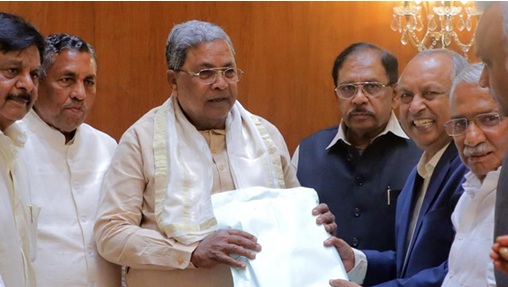| (General Studies Paper-2 : Welfare schemes for vulnerable sections of the population by the Centre and the States and the performance of these schemes; mechanisms, laws, institutions and bodies constituted for the protection and betterment of these vulnerable sections.) |
Reference
Justice (Retd.) H.N. Nagamohan Das Committee has submitted its much-awaited report on internal reservation among Scheduled Castes (SC) in Karnataka, aimed at ensuring equitable distribution of reservation benefits within the SC category.

Classification within SC communities in Karnataka
- There are 101 Scheduled Castes in Karnataka, which are broadly divided into the following groups:
- Rightist communities (e.g., Holeya)
- Leftist communities (e.g., Madiga)
- Apart from this, other smaller sub-groups also exist.
- Historically, the benefits of SC reservation (15%) have been dominated by certain sub-castes, leading to demands for internal reservation within SC to ensure social justice.
Formation of H.N. Nagamohan Das Committee
- In the year 2023, the Karnataka government constituted a committee headed by Justice H.N. Nagamohan Das to study the following:
- Extent of socio-educational backwardness of various SC sub-groups
- Equitable allocation of 17% SC quota
- This recommendation was made on the basis of the Supreme Court's judgment of August 1, 2024, which cleared the way for internal reservation by upholding its constitutional validity under Article 14.
Key Recommendations of the Committee
- Five proposed categories
- The Committee has proposed five categories based on caste-wise backwardness and divided 17% of reservation among them.
- This classification is scientific and based on the Mandal Commission report and guidelines laid down by the Supreme Court.
- Subdivide SC quota into internal categories to distribute reservation more fairly
- Focus on historical injustice, poverty, level of education and access to government jobs among different SC groups
- Data-driven approach to classify sub-groups based on level of deprivation
Relevance of the Report
- Promotes equality within SCs while ensuring that marginalised sub-castes within SCs are not left behind.
- Compliance with judicial directions: Based on previous Supreme Court decisions allowing internal classification within SCs (e.g., E.V. Chinnaiya v. State of Andhra Pradesh, repealed in State of Punjab v. Davinder Singh, 2020).
- Political sensitivity: Likely to affect electoral dynamics, especially in southern states with caste-based mobilisation.
- Administrative complexity: Implementation will require legislative action, possibly a constitutional amendment if challenged.
Recommendations of the earlier Sadashiv Commission
- The A.J. Sadashiv Commission was constituted in 2005 and submitted its report in 2012.
- The Sadashiv Commission relied heavily on 2011 census data, but Dalit rights groups did not agree with these figures as the census does not include caste-specific data. Eventually, the then government shelved the report.
- This classification led to protests by Dalit right-wingers and others. Meanwhile, in 2022, the government increased the reservation for Scheduled Castes from 15% to 17% and for Scheduled Tribes from 3% to 7% on the basis of another report of the H.N. Nagmohan Das Commission.
- Along with this, the then government divided the 17% reservation into four categories:
- Dalit Right Wing (5.5%)
- Dalit Left Wing (6%)
- Lambani, Bhovi, Korcha and Korma (4.5%)
- Others (1%)